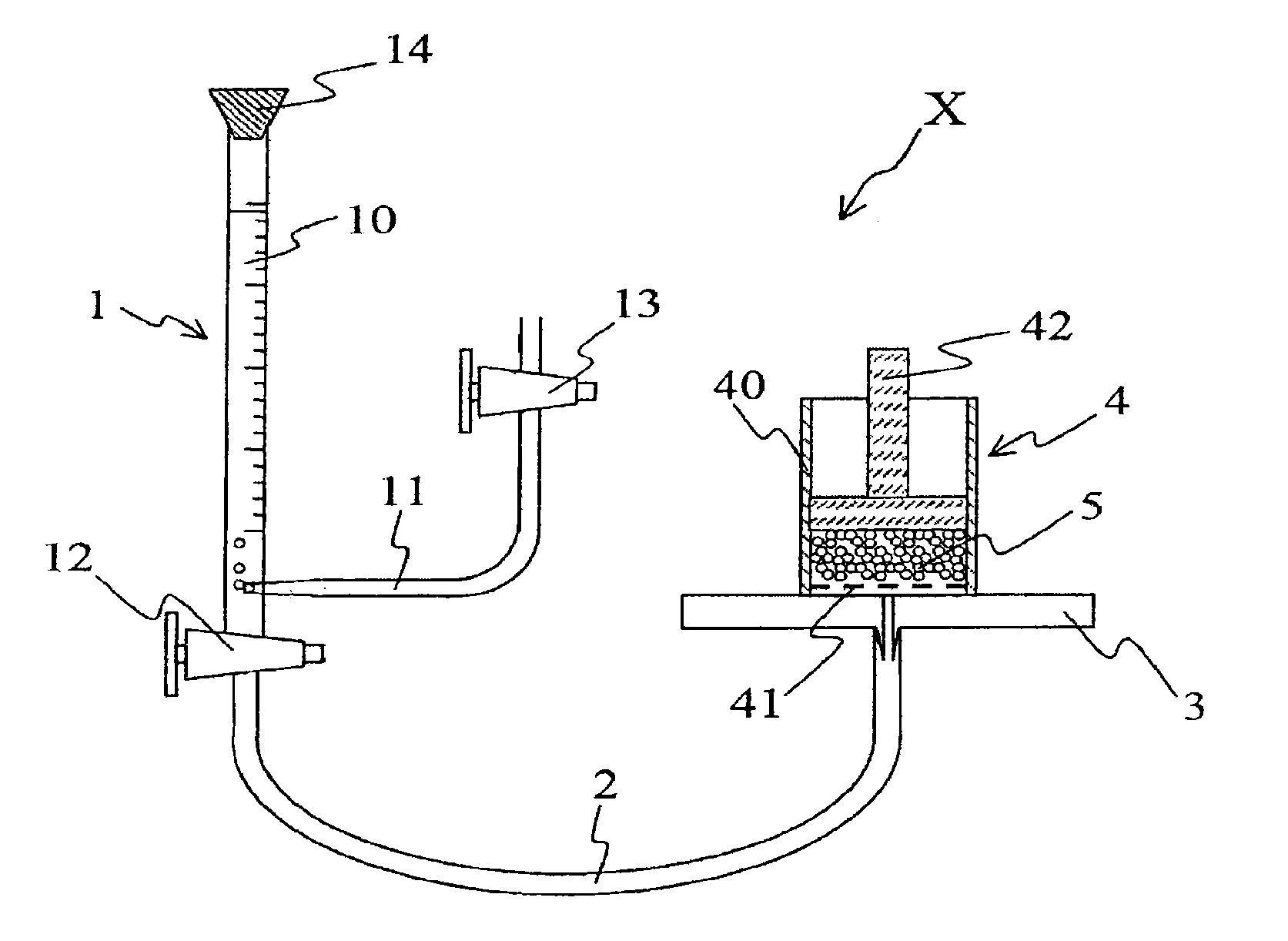Method for producing water-absorbent resin, and water-absorbent resin obtained by same
a technology of water-absorption resin and water-absorption resin, which is applied in the direction of bandages, chemistry apparatus and processes, and other chemical processes, can solve the problems of increasing leakage or re-wet, affecting the production reducing the efficiency of hygienic materials, etc., to achieve excellent water-absorption rate, excellent flowability, and high water retention capacity
- Summary
- Abstract
- Description
- Claims
- Application Information
AI Technical Summary
Benefits of technology
Problems solved by technology
Method used
Image
Examples
example 1
[0063]A cylindrical round bottomed separable flask having an inner diameter of 100 mm, equipped with a reflux condenser, a dropping funnel, a nitrogen gas inlet tube, and a stirrer having two steps of stirring blades having 4 inclined paddle blades with a blade diameter of 50 mm was furnished. This flask was charged with 321 g of n-heptane, and 0.92 g of a polyoxyethylene stearyl ether stearate having an HLB value of 4 (Nihon Emulsion Co., Ltd., EMALEX SWS-4) and 0.92 g of a maleic anhydride-modified ethylene-propylene copolymer (Mitsui Chemicals, Inc., Hi-wax 1105A) were added thereto. The temperature was raised to 80° C. to dissolve the surfactant, and thereafter the solution was cooled to 55° C.
[0064]On the other hand, a 500 ml-Erlenmeyer flask was charged with 92 g (1.03 mol) of an 80.5% by mass aqueous solution of acrylic acid, 51.2 g of ion-exchanged water and 0.28 g of hydroxyethyl cellulose (Sumitomo Seika Chemicals Co., Ltd., AW-15F), and 102.9 g of a 30.0% by mass aqueous ...
example 2
[0067]The same procedures were carried out under the same conditions as in Example 1 except that the surfactant was changed to 0.92 g of a polyoxyethylene stearyl ether stearate having an HLB value of 5 (Nihon Emulsion Co., Ltd., EMALEX SWS-6), to give 98.3 g of a spherical water-absorbent resin.
example 3
[0068]The same procedures were carried out under the same conditions as in Example 1 except that the surfactant was changed to 0.92 g of a polyoxyethylene stearyl ether stearate having an HLB value of 6 (Nihon Emulsion Co., Ltd., EMALEX SWS-9), to give 103.7 g of a spherical water-absorbent resin.
PUM
| Property | Measurement | Unit |
|---|---|---|
| temperature | aaaaa | aaaaa |
| temperature | aaaaa | aaaaa |
| reaction time | aaaaa | aaaaa |
Abstract
Description
Claims
Application Information
 Login to View More
Login to View More - R&D
- Intellectual Property
- Life Sciences
- Materials
- Tech Scout
- Unparalleled Data Quality
- Higher Quality Content
- 60% Fewer Hallucinations
Browse by: Latest US Patents, China's latest patents, Technical Efficacy Thesaurus, Application Domain, Technology Topic, Popular Technical Reports.
© 2025 PatSnap. All rights reserved.Legal|Privacy policy|Modern Slavery Act Transparency Statement|Sitemap|About US| Contact US: help@patsnap.com

